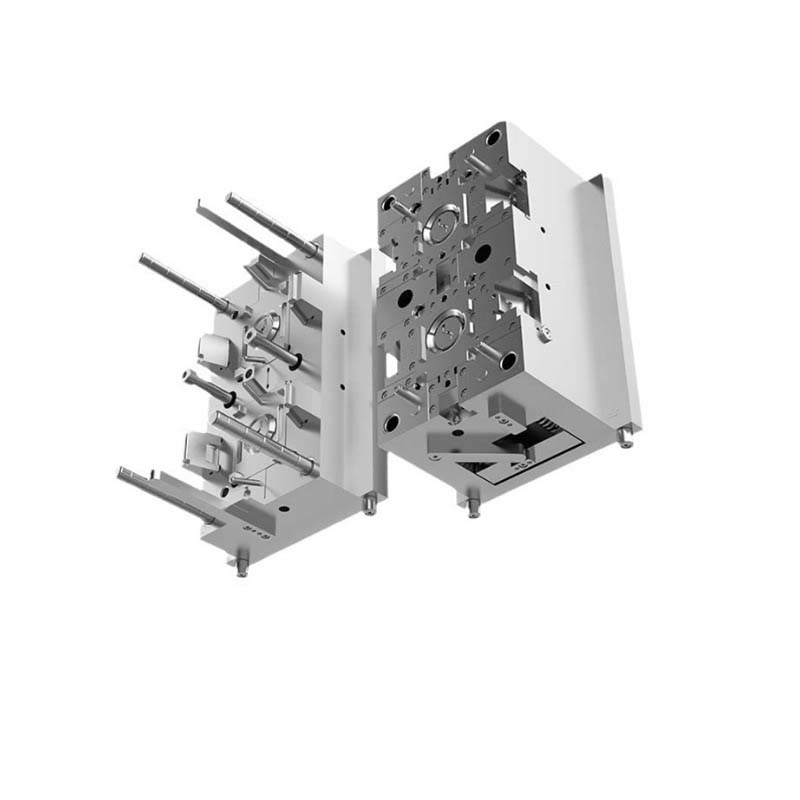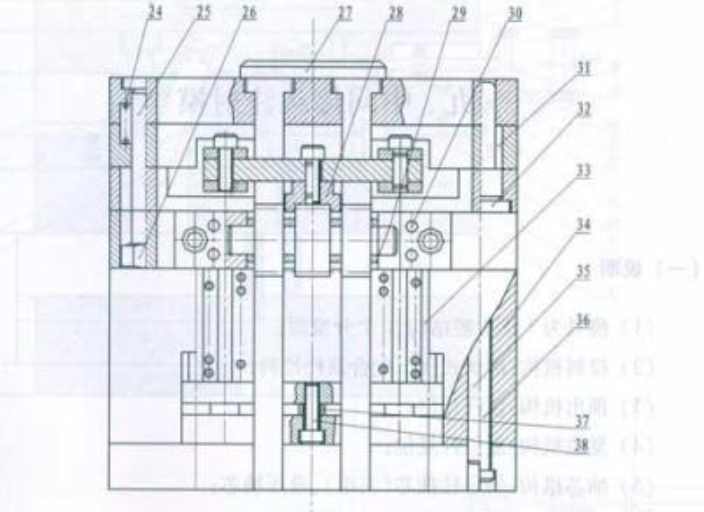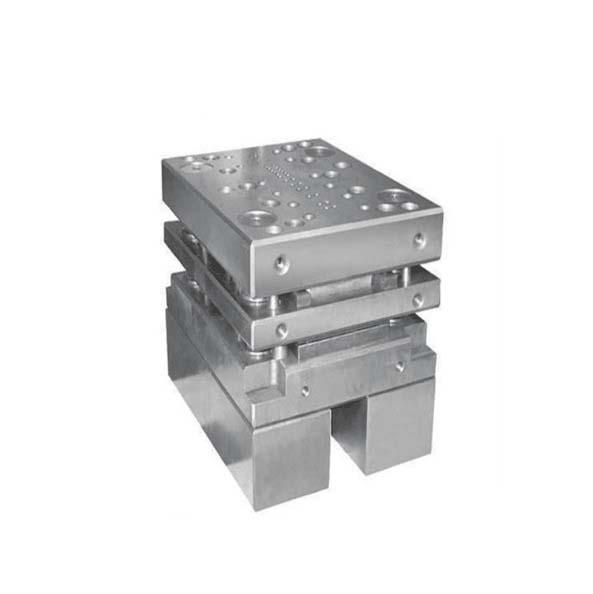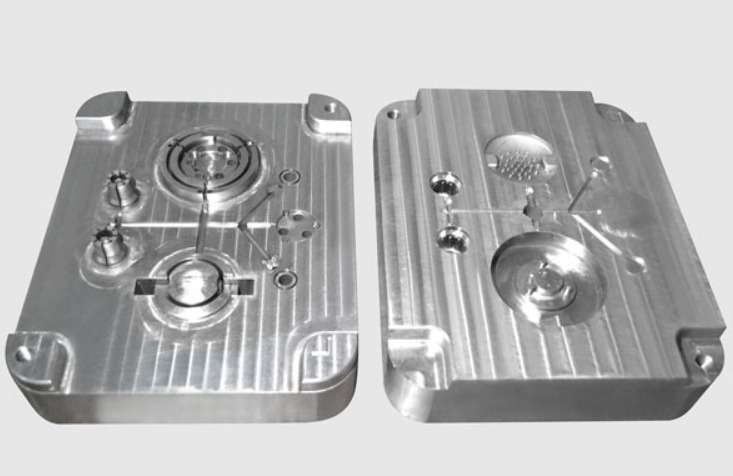Introduction
What is Mold Design and the Significance of Drawing Parts
Mold design is a crucial aspect of the manufacturing industry. It involves creating a detailed plan for the production of molds, which are used to shape various materials into specific products. These molds can be made from a variety of materials such as metal, plastic, or rubber, and are used in processes like injection molding, die - casting, and extrusion.
Drawing all parts in mold design is of utmost importance. Firstly, it serves as a visual representation of the entire mold structure. Just like an architect's blueprint for a building, a detailed drawing of mold parts allows manufacturers to understand the shape, size, and how each component fits together. This understanding is fundamental for the actual manufacturing process of the mold. For example, in injection mold manufacturing, the accurate drawing of the cavity and core parts helps machinists to precisely machine these components, ensuring that the final plastic product will have the correct dimensions and shape.
Secondly, drawing parts plays a vital role in quality control. By having clear and detailed drawings, quality inspectors can easily check if the manufactured parts meet the design specifications. Any deviation from the drawing can be quickly identified, whether it's an incorrect hole diameter, a misaligned surface, or a wrong angle. This early detection of defects helps in reducing production waste and costs. For instance, if a mold part is produced with a dimension that is 0.5mm off from the drawing in a high - precision mold for medical device production, it could lead to non - compliant final products, and detecting this error early through drawing inspection can save significant rework or scrap costs.
Moreover, in a team - based manufacturing environment, drawings are an essential means of communication. Designers, engineers, machinists, and quality control personnel all refer to the drawings. They can discuss modifications, improvements, or potential issues based on these visual representations. For example, during a new mold project kick - off meeting, the design team can present the part drawings to the manufacturing team, and together they can identify any manufacturability issues, such as areas that might be difficult to machine or need special tooling.
Different Parts in Mold Design and Their Drawing Requirements
Core and Cavity
The core and cavity are the most critical parts in a mold as they directly determine the shape of the final product. The core forms the internal features of the product, while the cavity creates the external shape.
Size Precision: In the drawing of the core and cavity, the dimensional accuracy requirements are extremely high. For example, in a high - precision plastic injection mold for electronic components, the dimensional tolerance of the core and cavity may be required to be within ±0.01mm. Any deviation from this tolerance can lead to products with incorrect dimensions, which may not fit properly with other components in the final assembly.
Surface Roughness: The surface roughness of the core and cavity also needs to be clearly marked on the drawing. A smooth surface finish, often expressed as a low Ra value (such as Ra 0.2 - 0.4μm for optical - grade plastic products), is required for products that demand a high - quality surface appearance. If the surface roughness is not specified accurately in the drawing, the machined core and cavity may have a rough surface, causing defects like surface scratches or uneven texture on the final product.
In a die - casting mold for automotive parts, the core and cavity may have more complex shapes. When drawing these parts, special attention should be paid to the draft angles. These angles, usually in the range of 0.5° - 2°, are essential for the easy ejection of the cast part from the mold. If not properly drawn and accounted for during manufacturing, the part may get stuck in the mold, leading to damage to both the part and the mold.
Runner System
The runner system, consisting of the sprue, main runner, and sub - runners, is responsible for delivering the molten material (such as plastic in injection molding or metal in die - casting) from the injection unit to the cavity.
Diameter and Length: The diameter and length of each part of the runner system need to be precisely drawn. For instance, in a medium - sized injection mold, the diameter of the main runner might be 8 - 12mm, while the sub - runners could have a diameter of 4 - 6mm. These values are not arbitrary; they are calculated based on factors like the volume of the cavity, the viscosity of the material, and the injection pressure. If the diameter is drawn too small in the design, it can cause high - pressure drops, leading to incomplete filling of the cavity. On the other hand, an overly large diameter can result in excessive material waste and longer cooling times.
The length of the runner should also be optimized. A long runner may increase the pressure loss and cooling time, so it needs to be as short as possible while still ensuring even distribution of the material. For example, in a multi - cavity mold, the runner length to each cavity should be designed to be equal to ensure simultaneous filling.
Tilt Angle: The sprue often has a certain tilt angle, typically around 3° - 5°, which should be clearly indicated in the drawing. This angle helps the molten material to flow smoothly into the main runner and also aids in the easy removal of the solidified sprue from the sprue bushing during the ejection process.
The following table shows the characteristics of different runner layout drawings:
| Runner Layout | Drawing Features | Advantages | Disadvantages |
| Linear | Straight - line arrangement of runners. Easy to draw and understand. | Simple to manufacture, low pressure loss for single - cavity molds | Not suitable for multi - cavity molds with complex shapes, may cause uneven filling in multi - cavity cases |
| Radial | Runners radiate from a central point. | Good for evenly distributing material in circular - shaped multi - cavity molds | Difficult to draw accurately, may require more space in the mold |
| Balanced Tree - like | A branched structure designed to ensure equal flow to all cavities. | Ideal for multi - cavity molds, ensures consistent product quality across cavities | Complex to design and draw, higher material consumption in runners |
Ejection System
The ejection system, which includes components like ejector pins, ejector plates, and sleeves, is crucial for removing the molded part from the mold after the forming process.
Position Precision: The position of the ejector pins on the drawing must be accurately specified. For example, in a plastic injection mold for a small - sized consumer product, the ejector pins need to be placed in areas that can effectively push the product out without causing deformation. The center - to - center distance of ejector pins may be specified within an accuracy of ±0.5mm. Incorrect placement, as indicated by an inaccurate drawing, can lead to uneven ejection forces, causing the product to warp or break during ejection.
Ejection Direction: The ejection direction should be clearly marked on the drawing, usually with an arrow indicating the path of ejection. In most cases, the ejection direction is perpendicular to the parting line of the mold. However, in molds with complex geometries or undercuts, more elaborate ejection mechanisms, such as side - action ejectors, may be required, and their operating directions must be precisely detailed in the drawing.
Based on my experience, one common mistake in drawing the ejection system is not considering the interference between the ejector pins and other mold components. For example, if the drawing does not show the clearance between the ejector pins and the core or cavity accurately, during the mold - closing process, the ejector pins may hit the core or cavity, causing damage to the mold. To avoid this, a minimum clearance of 0.5 - 1mm should be specified in the drawing between the ejector pins and other critical components.
Cooling System
The cooling system, mainly composed of cooling channels, plays a vital role in reducing the cycle time of the molding process and ensuring the quality of the final product by evenly cooling the mold.
Pipe Dimensions: The diameter of the cooling channels is an important parameter. In a typical injection mold, the diameter of the cooling channels can range from 6 - 12mm. If the diameter is drawn too small in the design, the cooling efficiency will be low, resulting in longer cooling times and potentially affecting the productivity. On the other hand, an overly large diameter may weaken the structural strength of the mold.
Layout: The layout of the cooling channels needs to be carefully designed and accurately drawn. They should be arranged in a way that ensures uniform cooling of the core and cavity. For example, in a flat - shaped mold for plastic sheets, the cooling channels may be arranged in a serpentine pattern to maximize the contact area with the mold surface and provide even cooling.
Distance from Other Components: The distance between the cooling channels and other mold components, such as the core, cavity, and ejector pins, should also be specified in the drawing. A minimum distance of 10 - 15mm is usually maintained to prevent interference and ensure proper functioning of all components.
Take the case of a large - scale injection mold for automotive bumpers. If the cooling system is not properly designed and drawn, with channels too close to the cavity wall, it can cause uneven cooling. This uneven cooling can lead to internal stresses in the bumper, resulting in warping or cracking of the final product. So, accurate drawing of the cooling system is essential to avoid such costly defects.
Ensuring Accuracy in Mold Part Drawings
Use of Precision Measuring Tools
Precision measuring tools are the cornerstone of accurate mold part drawings. Common tools include calipers and micrometers. For example, a vernier caliper can measure lengths, internal and external diameters with an accuracy of up to 0.02mm. When measuring the length of a mold runner, the caliper's jaws are carefully aligned with the two ends of the runner. Make sure the caliper is perpendicular to the runner to avoid parallax errors. Micrometers, on the other hand, offer even higher precision, often up to 0.001mm. When using a micrometer to measure the diameter of an ejector pin, first ensure that the measuring faces of the micrometer are clean. Slowly rotate the thimble until the measuring faces gently touch the pin. Be careful not to apply excessive force, as this can deform the pin or damage the micrometer.
Standardized Drawing Practices
Following standardized drawing practices is essential in mold design. In the industry, standards such as the American Society of Mechanical Engineers (ASME) Y14.5 for dimensioning and tolerancing are widely adopted. According to this standard, projection rules, like the third - angle projection commonly used in the United States, must be strictly followed. In third - angle projection, the object is assumed to be in the third quadrant, and views are projected onto planes that are behind, above, and to the right of the object. This results in a specific arrangement of views on the drawing, which helps in clearly understanding the part's shape.
The use of different line types also has specific regulations. For example, visible outlines are drawn with thick, continuous lines, while hidden lines are represented by thin, dashed lines. In a mold part drawing, if the cavity's internal features are not visible from the outside, they are shown using hidden lines. This clear distinction between line types helps machinists and other manufacturing personnel to quickly identify different features of the part.
In contrast, in some European countries, the first - angle projection is more commonly used. In the first - angle projection, the object is assumed to be in the first quadrant, and the views are projected onto planes that are in front, above, and to the left of the object. This difference in projection methods can lead to significant differences in how a mold part drawing is interpreted. For instance, the position of views and the way internal features are shown may vary, which could cause misunderstandings if not clearly communicated between different teams or regions.
Review and Validation Processes
The review and validation processes are crucial to catch errors in mold part drawings. In a design team, after the initial drawing is completed, it goes through an internal review. Team members, including senior designers and engineers, carefully check the drawing. They look for common errors such as incorrect dimensioning. For example, a dimension might be accidentally transposed, like writing 12.5mm as 15.2mm. Another common mistake is inconsistent tolerancing. If different parts of the same mold have inconsistent tolerance specifications, it can lead to issues during assembly.
After the internal review, the drawing is cross - validated with the manufacturing department. The manufacturing team, with their practical knowledge of machining processes, can identify issues that the design team might have overlooked. For example, they can point out if a certain feature on the drawing is difficult or impossible to machine with the available equipment. In such cases, the design team and the manufacturing team work together to find a solution, which could involve modifying the design or using alternative machining methods. This collaborative review and validation process helps to ensure that the final mold part drawing is accurate, manufacturable, and meets all the requirements for successful mold production.
Yigu Technology's Perspective
As a non - standard plastic and metal products custom supplier, Yigu Technology deeply understands the importance of precise drawing in mold design. We believe that attention to detail is crucial. Every dimension, tolerance, and surface finish indication in the drawing must be accurate to ensure the quality of the final mold and product.
Meeting customer - specific requirements is at the core of our drawing process. We work closely with customers to understand their unique product needs and translate them into detailed and customized mold part drawings. This may involve special shapes, unique material requirements, or specific functionality, all of which are carefully reflected in the drawings.
Moreover, we leverage advanced technologies such as 3D modeling and CAD/CAM software to improve the quality and efficiency of drawing. 3D models provide a more intuitive view of the mold structure, allowing for better visualization and early detection of potential issues. CAD/CAM software enables precise dimensioning and quick modification of drawings, reducing errors and shortening the design cycle. By combining these technologies with our experienced engineering team, we are committed to providing high - quality mold design drawing services that meet the diverse needs of our customers.








